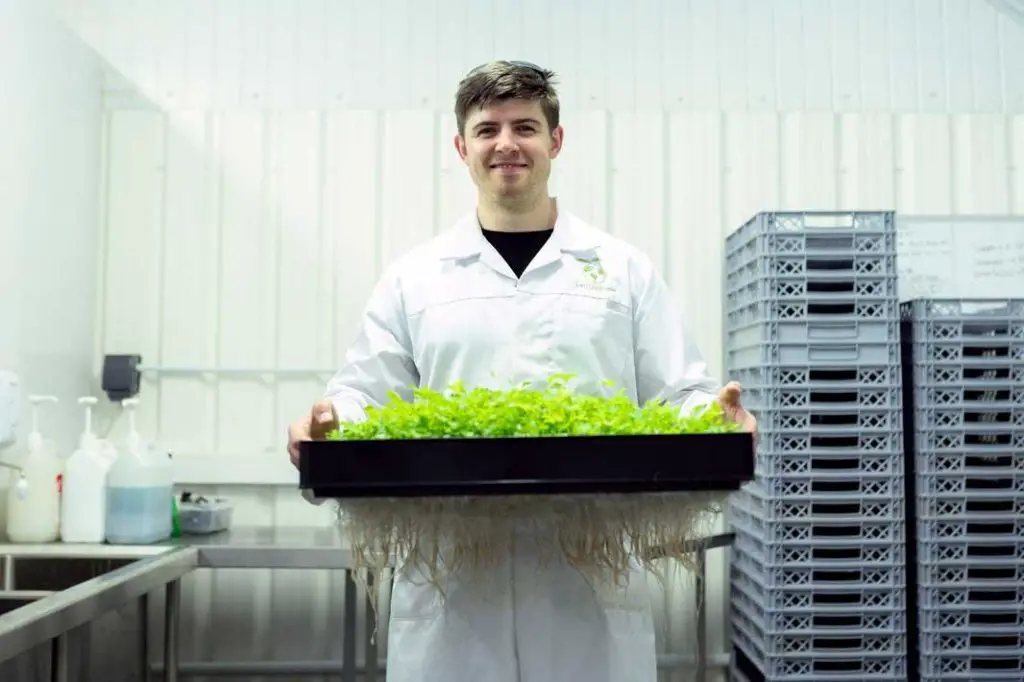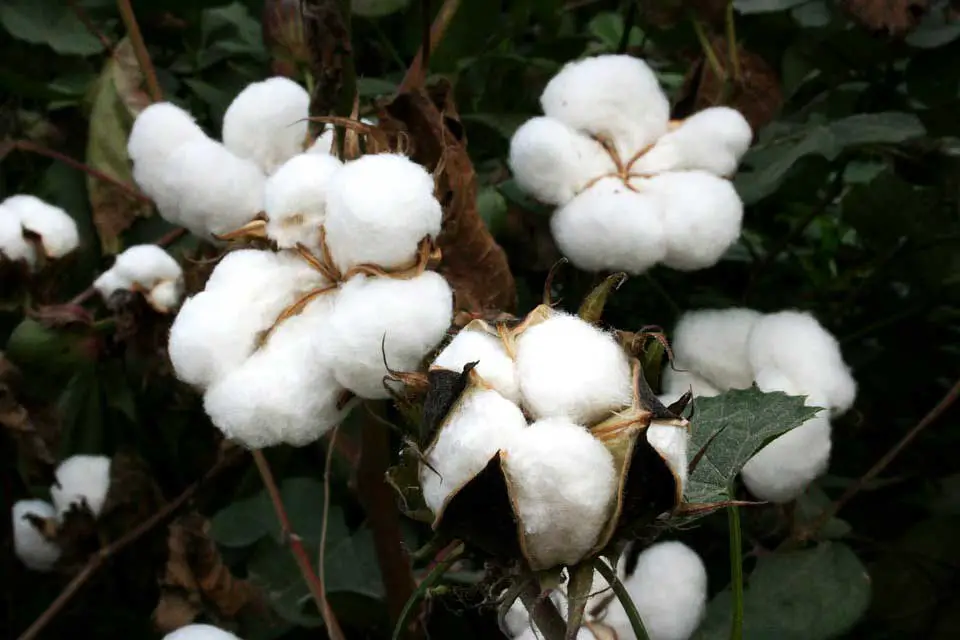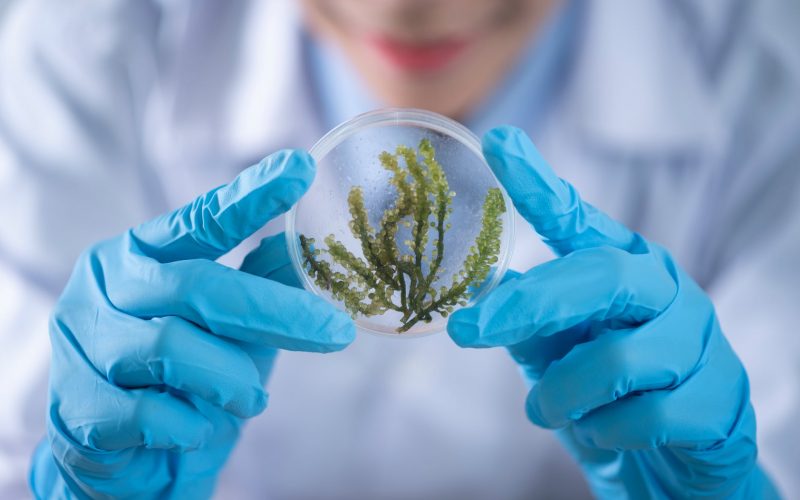Table of Contents Show
Before moving ahead, let me tell you what is Biotechnology. Then I’ll tell you all about Agricultural Biotechnology!
As we all know, nature is part of most of the environment we see around us.
Navigation:
History/Link between Biotechnology and Agriculture
Difference between Traditional Biotechnology and Genetic Engineering
Advantages of applying Biotechnology in Agriculture
- Higher crop yield
- Higher Protection of Crops
- Increased Nutritional Value
- Enhancements in Food Production Processes
- Better Flavors
- Fresher Produce/ Increased Shelf-life
- Benefits to the Environment; My Favorite!
- Improvements in Developing Countries
Disadvantages of Biotechnology in Agriculture
- Allergens and Toxins
- Antibiotic Resistance
- Potential of ‘superweeds’
- Gene Escape
- Effect on ‘non-target species’
- Insecticide Resistance
- Loss of Biodiversity in Organisms
- Food Labels
- Suicide Seeds
Are there any checks or safety regulations on Biotechnology food products?
Should we Embrace Biotechnology in Agriculture (agritech)? Or should we risk it?
What is Biotechnology?
Biotechnology looks into the processes of nature in plants, living beings and organisms, only to implement scientifically proven methods to develop new (maybe better) products out of them.
When you go onto applying these scientific techniques in the field of agriculture, this is known as Agricultural Biotechnology.
History/Link between Biotechnology and Agriculture
In fact, one of the first applications of biotechnology was in agriculture.
For centuries, farmers have been manipulating the genetics of plants and animals in order to obtain certain traits or enhance them through a process known as selective breeding.
A very early example of conventional agricultural biotechnology would be how farmers kept on cross-breeding different varieties of wheat until the much-needed disease-resistant trait was obtained from the resulting new variety of wheat.
As the science evolved, by the 1970s scientists learned to make changes to DNA (chemical structure that translates to characteristics or traits of living organisms) at the molecular level to transform them into genetically modified organisms. This is known as Genetic Engineering.
This involves using scientific techniques to modify the genetic material (gene) of plants, animals and microorganisms in order to obtain a desired trait in a modified organism or species.
Later, we were able to isolate specific traits from plants such as increased yield, pest and drought resistance and even pesticide or herbicide resistance. Then, by the end of 20th century, the technology moved even further and led to the development of the first genetically modified food in 1994; the Flavr Savr tomato.
In 2019, we have reached the level where we can not only change but transfer specific genes from one organism to another. An organism developed through such genetic engineering methods is known as genetically modified organism or transgenic organism.
As i was discussing the history of genetic engineering, I mentioned the term ‘genetically modified foods‘.
These are basically foods that come from transgenic plants and are called multiple names such as ‘genetically modified products’ (GMPs), ‘biotechnology-enhanced foods’, ‘biotech foods’ and even ‘frankenfoods’ (Really?!).
Another term popularly used is ‘genetically modified organism’ or ‘GMO’ as i mentioned them multiple times throughout this article. These terms are newly assigned to the process since the practice of genetic modifications has been around for centuries since cross-breeding always results in a genetically modified offspring which is genetically modified in contrast to the parents.
While I was doing research on this article, one of the things I initially got quite confused in was the difference between conventional biotechnology and genetic engineering. So i wanted to clear it once and for all. So here goes,
Difference between Traditional Biotechnology and Genetic Engineering
Conventional breeding or Traditional Biotechnology involves crossing of breeds in an uncontrolled manner. As in, the breeder could certainly control which two breeds to cross but what goes on at the genetic level is out of his control.
All the traits are mixed and randomly end up in the offspring which means with the desired trait, there could be a few unwanted traits. Like a plant could have high crop yield but at the same time, very low pest-resistance which could be deadly.
These methods take up quite a lot of time and effort to work. A great chunk of this is used up in obtaining desirable traits and removing undesirable traits from the genes.
For example, a plant needs to be crossed again and again over many growing seasons of at-least 3 months to remove the unwanted traits that come in the genes through random mixing. This is at many times not economically viable for small family farms which cannot take the risk.
Now we’ll go on to discuss genetic engineering.
Today’s advanced scientific research has allowed us to segment a section of DNA that codes for the gene of a desired trait and transfer it to the DNA of a new transgenic organism. And in the same manner, you can remove an undesirable trait from the gene sequence of an organism as well.
We’re at the level where gene editing is just as easy as editing an image on Photoshop!
The use of recombinant dna technology allows us to achieve changes much quicker than with traditional breeding techniques.
Additionally, you can test your desired trait at any time during the experiment to check if it has showed up. All you have to do is plant the seedlings in a greenhouse-tray.

Often when you’re reading about genetically engineered crops or gmos you wonder how you could get your hands on the genetically modified agricultural products that are produced as a result. So… Are they present around us?
Yes! Research suggests that, in the food section of the supermarkets, atleast 60-70% of food products may be derived ,in full, or partially, from crops developed using new techniques.
Farmers have embraced the change to newer methods so well that one-third of the corn as well as 3/4 of soya bean and cotton grown in USA is now sourced through genetically modified crops.
The Transgenic crops that have been approved by USDA to be sold commercially are:
- corn
- potato
- tomato
- cotton
- soybean
- rapeseed
- papaya
- beets
- squash
- rice
- flax
- chicory
The highest production is of cotton, ‘Bt’ corn and soybeans that are resistant to Glyphosate. What happened with cotton and corn was that the DNA of a naturally insect-killing organism, Bacillus Thuringiensis was introduced into their DNA.
This organism (bacillus thuringiensis bt) kills most of the deadly pests that bite into the plant, particularly the ones dangerous for conventional crops of cotton and corn, otherwise sparing the insects good for the plant.
This revolutionized the section of pest control for the farmers.

Glyphosate is a herbicide that kills almost every plant that gets in its way, but the presence of the glyphosate resistance gene in the soybean DNA allows the farmers to openly spray glyphosate over the farmland without any harm to the crop.
Bt corn, cotton and glyphosate-resistant are sometimes referred to as ‘biotech crops’ or ‘gm crops’.
Every product that you find out or read about has its own risks and benefits. When talking about genetic engineering, there are quite the benefits and some risks that haven’t been scientifically proven until today.
And before i say anything more let me just get right into the topic of how blending biotechnology and agriculture is beneficial for us.
Advantages of applying Biotechnology in Agriculture
1. Higher crop yield
With the rising population demand for food, it has become somewhat necessary to increase the yields of farms to fulfill that demand.
Biotechnology has made it possible by strengthening disease and drought resistance. What they do is that they select specific genes of disease resistance and inject them into the DNA of plants to make them resistant.
An example is how Cornell University and University of Hawaii worked together to develop two seed varieties of papaya that were resistant to the papaya ringspot virus, the commercial availability of which was in 1998 after hundreds of field trials.
Drought resistance is also quite the need for crops growing in dry climates.
2. Higher Protection of Crops
Farmers use newer developments in the section of pest control because if not, there is a risk of severely lowering of yields.
As we were discussing a few minutes before of how insect pests are killed when they bite into Bt crops, this is because the plants have been transformed in a way to make such a protein that is toxic to those pests.
This protein from Bacillus Thuringiensis has been an ingredient of many ‘natural’ insecticides.
It’s mostly about the economics. Sometimes it’s much more economical to make use of transgenic crops rather than applying the Bt insecticide externally.
This way, the whole plant is insect-resistant rather than just the part where the insecticide is applied. This leads to higher yields as well, thereby making the technology more effective and economically viable.
However, some farmers who insist on growing ‘organic’ are recommended to and make use of applying the natural insecticide externally.
3. Increased Nutritional Value
Biotechnology doesn’t only make plants be more resistant to worsening climate change but literally makes them better. Specific isolated genes can even be inserted into the genome of plant species to increase their nutritional value.
This theory was initially put into practice with rice, one of the most eaten foods of the world.
It was discovered that rice contained Vitamin A in their genes but while growing those genes would not be ‘turned on’ so as to say. So what scientists did was to reverse the process and thereby activate those genes during growth.
This means the nutritional value of many other food crops could possibly be increased using recombinant dna technology. Considering the rising food demand in coming years, this could be the answer on how to solve malnutrition.
Other similar examples would be higher protein content in soybeans or potatoes with increased amino acids and starch content.
4. Enhancements in Food Production Processes
Chymosin is an enzyme produced from genetically engineered bacteria.
It was the first food product to get approval for commercial production. It replaces an active ingredient calf-rennet used in cheese-manufacturing processes.
The genetically engineered enzyme has become so integrated into the process that it’s now in 60% of all cheese manufactured worldwide.
There are a few reasons for that; Higher purity, continuous supply and up to a 50% cost reduction!
5. Better Flavors
Believe it or not, genetic engineering can also alter the taste of food products.
This is done by promoting the activity of enzymes that work to transform aroma precursors into flavoring compounds. Transgenic melons are being researched on and are undergoing field trials nowadays.
6. Fresher Produce/ Increased Shelf-life
Agricultural biotechnology can also increase the shelf life of gm food products which could help in reducing waste as well as allow consumers access to fresher produce.
By allowing the food products to stay ripened and prevent them from over-ripening, minimal food would go to waste.
An example would be how Transgenic Tomatoes are vine-ripened and then transported without being bruised.
7. Benefits to the Environment; My Favorite!
As we discussed above of how transgenic crops became inherently resistant to pesticides, this led to much reduced used of pesticides.
Only the organic farmers now have the need of applying the ‘natural’ insecticides externally which is quite the win.
With reduced use of pesticides, there is reduced pesticide residues on food products and reduced leeching of pesticides into the groundwater and nearby rivers and lakes.
This also sometimes completely eliminates the exposure of farmers to hazardous pesticide chemicals. Introduction of transgenic bt cotton has led to 15% decline in use of pesticides in all of United States!
The Federal Drug Administration (FDA) also suggested that in herbicide-tolerant soybeans there were minor increases in profit margins and crop yields but the use of herbicides had decreased significantly.
8. Improvements in Developing Countries
As i was discussing before in the section of increased nutritional value about how recombinant dna technology was used to activate and increase the amount of beta-carotene in what came to be known as ‘golden rice’.
The higher amount of beta-carotene was finally able to fulfill the Vitamin A requirements in developing countries with populations which have rice-based diets, which was necessary since Vitamin A deficiency leads to blindness.
Other than that, it can save people from malnutrition due to vitamin deficiencies where buying vitamin supplements is very expensive.
If it’s so good, then what’s stopping us from implementing this in full speed?
Quite a few things actually; environmentalists, policy makers and legislates believe that we haven’t made sufficient effort to understand the risks associated with mixing biotechnology and agriculture.
And that it could have long term impacts as well, especially when one mistake could affect the generations to come.
We conducted a survey into asking people a few questions about biotechnology and agriculture.
What we found was that people got quite confused in statements regarding biotechnology products and suffered great anxiety which was possibly derived from a lot of misinformation and in many cases, inadequate information.
The concern of humans regarding their food products is understandable. The issues associated with these concerns should be addressed fully.
Some of the issues related to applications of biotechnology are discussed ahead.
Disadvantages of Biotechnology in Agriculture
Let’s start with the most invasive and immediate concerns first, like health-related issues and then move ahead to environmental and social implications as a result of applications of biotechnology.
1. Allergens and Toxins
Most of us know what an allergic reaction is; it’s just an immune response to a protein (allergen) that the body is specifically allergic to.
These proteins are called allergens and are present in food products. About 2% of the total population in the world is allergic to one or two food products.
A major concern is the risk of introducing new allergens into foods that were initially considered safe and free of all allergens.
Hence, the Federal Drug Administration (FDA) now has to keep strict checks to make sure that the concentration of naturally occurring allergens in conventional varieties has not been enhanced in the transgenic food products.
However, good news would be how scientists are trying to remove the allergens from peanuts, one of the most common causes of serious food allergy.
2. Antibiotic Resistance
When plants are infused with new desirable traits, the antibiotic resistance genes are used to find and trace the traits. This techniques tells us that the gene transfer was successful.
However, since this technique uses these antibiotic resistance genes, there is a concern that new antibiotic-resistant bacteria could emerge which would be difficult to tackle with conventional antibiotics.
This has led to FDA advising food developers to abstain from using such type of a gene, although the chance of this gene making it’s way into the DNA of bacteria is very minute.
3. Potential of ‘superweeds’
As we were discussing how the antibiotic resistance gene in plants could escape and end up in bacteria.
A similar concern is that transgenic plants could pollinate with the unwanted plants (weeds) and thereby relay the gene of herbicide-resistance or pesticide-resistance into them, thereby converting them into ‘superweeds’.
An example would be how glyphosate-resistant plants could cross-pollinate with weeds and make them glyphosate-resistant as well.
This may be possible but the chances of it happening are very low. But this doesn’t mean the plants would be resistant to all herbicides, other herbicidal products could also work.
4. Gene Escape
Some believe the genes could get into the weeds and then those plants could ‘escape’ into the wild and lead to damaging changes to Ecosystems.
But the thing is, these biotech crops have limited growth and seed dispersal habits which doesn’t allow much of a chance to pollinate. Other than that, these plants need constant attention by humans for them to grow properly.
This is what some people believe happened with the Coronavirus pandemic.
5. Effect on ‘non-target species’
Many environmentalists believe that once these transgenic plants are released into the environment, there is a lot of uncertainty on what could happen.
Although the transgenic crops are tested more times than one could count, but one can’t foresee what could happen.
An example would be Bt corn, the plant is specifically toxic to harmful pests that feed on the plant. However, later researchers found out that the pollen from transgenic Bt corn plant could kill unrelated caterpillars of the Monarch Butterfly.
Other than that, Recent studies have indicated an effect on the lifespan and cognitive abilities of insects that feed on these plants.
What’s more to say is, these could as easily be keystone species!
6. Insecticide Resistance
A valid concern is that insect pests could develop resistance to the insecticide which is embedded in the biotech crops.
Hence, they could bypass the crop-protection features of those plants and be quite damaging.
However, the main example we talk about is bt corn plants, which, even after being planted widely have not led to the development of any insecticide tolerance.
7. Loss of Biodiversity in Organisms
The extensive use of agritech varieties of seeds have made some agriculturists fearful as this may hurt the biodiversity of plant species.
The extensive use of GMO varieties is because of the fact that they are more profitable and drought resistant which has made farmers abandon their traditional varieties of plants.
The newer developed crop would dominate the farms and the traditional varieties would be on the brink of extinction which would mean that if in any case the dominating crops were to wither (maybe due to climate change) we would not have anything to resort to, which puts an enormous risk on food security.
However, there are many ‘heritage’ collection sites in USA where different seed varieties from all around the world are stored to ensure food security.
8. Food Labels
People argue ha they have a right to know exactly what they are consuming, this is why they request that special labels be put on food products derived from genetically engineered crops.
As of now, in the US, companies are only to place a label if the new gm food product is different in its nutritional value, composition or if they pose any health risks.
However, organic foods are usually from family farms that specifically avoid using any biotech in growing crops.
9. Suicide Seeds
This is also known as genetic use restriction technology. Farmers are forced to buy new hybrid seeds every season because the second generation seeds from biotech crops are always infertile.
This infertility is due to ‘terminator genes’ present inside gm seeds. It’s like a single-use product.
In conventional family farms, farmers used to store the seed to plant in the next season but that cannot happen if you would like to plant transgenic crops.
This means that, to reap the benefits of plant biotechnology, the farmers will have to enter the economic cycle of major biotech seed companies.
Are there any checks or safety regulations on Biotechnology food products?
There are three federal government agencies that keep checks on associations between biotechnology and agriculture.
Each of the three has different responsibilities.
1. United States Department of Agriculture (USDA)
USDA concerns itself with the fact that the new gm crops are safe to grow in farms.
2. U.S Food and Drug Administration (FDA)
FDA has the highest authority in deciding if the agricultural product can come into the markets, because it tests if the product is safe for the consumers to eat.
3. U.S Environmental Protection Agency (EPA)
EPA ensures if the product has any implications on the environment.
Should we Embrace Biotechnology in Agriculture (agritech)? Or should we risk it?
The fine line that divides traditional methods from plant biotechnology is the use of genetic engineering in which scientific tools and practices such as molecular markers, tissue culture molecular diagnostics and vaccines are utilized to genetically modify living organisms with recombinant dna to enhance desired traits.
Let’s just say it’s more invasive when compared to the traditional selective plant breeding practiced by farmers.
But it’s a necessary evil we have to bear if we are to counter the rising food demand.
Analyzing the population graphs, a food crisis is inevitable by 2050 as there will be a 70% higher demand of food. The only way we can fulfill this high demand is by using such applications of biotechnology to improve crops and increase food supplies.
The development of plants is also necessary as they will be encountering worse weather conditions as climate change worsens.
Given these pros and cons, it’s difficult to make a firm decision if we should embrace the use of Biotechnology in agriculture.
What is firmly believed is that genetically modifying these crops could have some unprecedented results on human health and environment. This is why the companies that make GMO crops should extensively test these products before introducing them into the markets.
Well, if they don’t; now we know there are at least three more agencies which surely will.
Further Reading:






